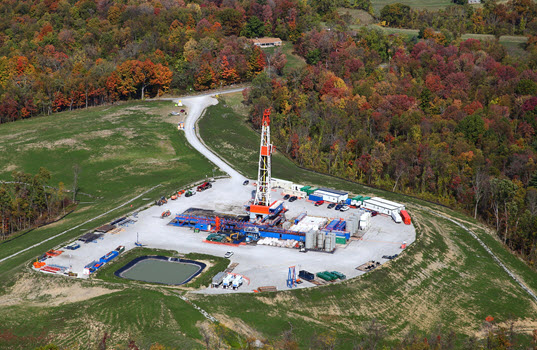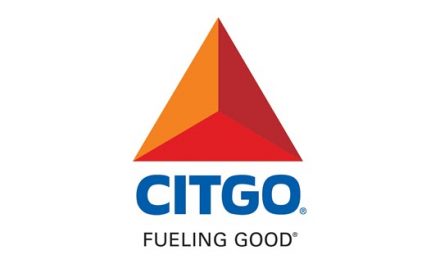By Keith Reid
The current oil war between Russia, Saudi Arabia and the United States is grabbing major headlines. Predictions include oil at $20 per barrel or lower and potentially irreversible damage to the US fracking industry. This is being driven by fears of demand destruction, perhaps significant, from the restrictions involved with coronavirus COVID-19 combined with decisions in both Russia and Saudi Arabia to dramatically increase oil production while dropping prices. There is even talk or a potential global recession. This has already resulted in a crude future drop of over 20% as this article is being put together, which is a rebound from a spike that passed 30%. The stock market has also taken some significant hits.
While it is too early to formally predict how this will play out, it is not too early to take a reasoned look at the factors involved and cover some of the factors that might mitigate worst-case scenarios.
We can start with a $20 per barrel projection.
My observation has been that the most dramatic of public predictions involving markets are often driven as much by financial opportunity or attention for the those pushing the narrative, as they are by market dynamics.
Case in point would be Goldman Sachs predictions of $200 per barrel oil back in 2008 right before the market collapsed. The oil analysts I spoke with at the time, such as the late Peter Beutel who was a nationally known traditional hedger who dealt more in real barrels than paper barrels, were less sure. Beutel had a hard time seeing how the then-current prices well short of $200 per barrel were being maintained, much less the possibility of $200 per barrel. That position was not prominent throughout the mainstream media (financial and otherwise) and the largest financial houses, but it was quickly proven correct.
This time around, there is some support for the idea that prices could hit $20 per barrel (or even less), at least for a short period of time. Some voices in the market, such as Goldman Sachs, are predicting a bottom more in the $35 per barrel range. Maybe they will be correct, this time around.
“If we really do go into recession, then we could see prices continue to soften,” said Alan Levine, Chief Executive Officer and Chairman of Powerhouse, which specializes in helping energy companies protect against price risk in all energy commodities. Levine is also a FMN contributor, and his Weekly Market Situation for this week further covers these developments. “Crude oil has support roughly around $24, but I have seen it at $10. And while I’m not predicting anything like that, we’ve been there before. One thing I know about commodity trading is that there is no price too high and no price too low.”
Moving on, how long will the price war last and what will be the ramifications? This is another area where the oil punditry is predicting everything from a devastating impact on the US oil fracking industry to short-term setbacks that will quickly be reversed.
For background on the current price war, oil futures started the new year in the $60 range and were on the uptick.
International recessionary concerns had been bubbling for some time when COVID-19 hit in Jan. 2020. These concerns were enormously amplified for a range of obvious reasons. Demand destruction for petroleum products is assured, at least to some level and for some time. Recessions, nationally and internationally, are possible depending on how the virus pandemic plays out.
The United States, and most publicly President Trump, had been pressuring Saudi Arabia for some time previously to keep oil prices below $70 per barrel. OPEC+, a group consisting of OPEC members plus other countries such as Russia and Mexico, had been working to stabilize prices at a higher level and generally reduce volatility. While all oil producers benefit from higher prices, that is particularly the case for non-traditional production such as fracking. This did not sit well with Russia, as it saw U.S. oil producers stealing its market share which ultimately represented a more significant long-term threat over the short-term oil revenue.
At the start of the price war, a spokesperson for Rosneft, Russia’s leading state-run oil company, stated: “By yielding our own markets, we remove cheap Arab and Russian oil to clear a place for expensive US shale oil and ensure the effectiveness of its production.”
Russia also has been resentful of U.S. sanctions related to Rosneft’s petroleum operations in Venezuela.
An OPEC+ initiative to drop production and shore up prices in the wake of the COVID-19 market reactions was the last straw. Russia dropped out on March 6 stating there would be no restrictions on its production. This is seen as a direct confrontation with Saudi Arabia’s OPEC leadership as much as with the United States.
The Saudi’s responded by promising to massively increase production to record-breaking levels: “Saudi Aramco announces that it will provide its customers with 12.3 million barrels per day (MMBD) of crude oil in April; i.e., an increase of 300 thousand barrels per day over the Company’s maximum sustained capacity (MSC) of 12 MMBD. The Company has agreed with its customers to provide them with such volumes starting 1 April 2020. The Company expects that this will have a positive, long-term financial effect.”
It has also indicated a willingness to significantly cut prices.
API President and CEO Mike Sommers held a teleconference on March 9 to discuss current developments. He presented a positive message, at least as positive as could be made with the dramatic initial futures price drop. He was not shy in placing blame, and noted this was a taste of what will likely be our future as a major competitive player on in the global oil market: “Many global players are threatened and have voiced concerns about the U.S. energy revolution, and their decisions are part of the reaction we can expect in the new paradigm of America as an energy superpower,” he said.
While conventional oil is cheap to produce in both Saudi Arabia and Russia, well under $10 per barrel according to some estimates, both countries have a heavy dependence on oil for their economies. According to Argus Global Markets, 65% Saudi Arabia’s economy is dependent on oil. For Russia that dependence is 37%.
On the surface neither will be able to ride out the price war without significant pain. The previous Saudi price war (2014-2015) aimed directly at U.S. producers ultimately fizzled out. This Policy Brief covers that outcome. The Saudi’s were able to suppress prices below $40 per barrel, which was thought to be the breaking point for U.S. producers, but the main result was the realization that Saudi Arabia was itself far too vulnerable to its own dependence on oil. What followed was a commitment by the Saudi’s to dramatically diversify its economy.
Russian sees itself better positioned for lower prices than Saudi Arabia. Not only is the impact of a price war statistically less painful, but the country has prepared reserves useful for such an event. A public statement on Russia’s official government website projected confidence in the current course of action: “The Russian oil industry has a high-quality resource base and a sufficient margin of financial strength to remain competitive at any forecast price level, as well as maintain its market share,” said Russian Minister Alexander Novak.
So, just what peril does U.S. producers face?
There are major concerns today with the amount of debt held by oil producers, with fears of catastrophic failure. This has been a common theme since the first big, self-induced natural gas glut of 2012 and has been a regular concern in headlines whenever prices have dropped. Marginal companies have failed, new companies arose and a core of larger operations have grown stronger and more efficient. If it plays out for an extended time, will this be different?
One new development has been that the financial industry learned lessons from the past and initiated measures to safeguard their investments in the sector.
“In the last few years, banks have become much more aware of the risk and they have tended to impose a hedging regimen on the producer,” said Levine. “The Banks will lend you the money, but you must buy Put options. Basically, a Put as a financial instrument that increases in value as oil prices fall. So, for many domestic producers, but not all, this should not really be an issue.”
Another point has been the break-even price for frack production. This is certainly higher than conventional oil, and will vary from company to company and region to region. It has traditionally been stated at somewhere in the $40 range, but for some operations it might be considerably lower as technology has advanced.
“Among my clients, we have some who claim they can produce effectively under $30,” said Levine. “One of them said, ‘It’s not like the old days–this is a manufacturing process.” You pull up the rig, you drill the well and you’re done. You can get it up and running in less than a month. It’s far different from conventional oil with finding the reservoirs, making sure you’re in the right spot, maintaining reservoir pressure… this is nothing like that.”
The same applies to shutting down production, if required. Shutting down conventional production is a far more serious decision, because it was far harder to restart a well. That is not the case with fracking.
In responding to a question during the API teleconference, Sommer’s noted: “We’ve seen these kinds of cycles happen in the past and we expect that over time, as we get a better handle on the Coronavirus, prices will rebound. But I think it’s also important that we recognize what the motivation is of Russia in this space. It is to put out of business the producers, particularly in the Permian basin, that have been so productive and led to historic American energy leadership. So, we’re very focused on making sure that these producers can continue to supply the leadership that they provided over the last 10 years of the American energy revolution.”
Sommers stated that the industry was not looking for any intervention in the energy sector by the Trump administration to provide temporary aid, at least at this time. However, the administration just announced it will consider such a move. The U.S. also suspended a planned, but certainly ill-timed sale from its Strategic Petroleum Reserve.
As noted at the start, only time will tell how this plays out. I was reminded of that by the headlines I came across doing some online searches to refresh my memory on the timeline of that initial Saudi price war in 2015. There were comparably timed headlines from mainstream sources such as Bloomberg, Business Insider, Forbes, Wall Street Journal, New York Times, etc. dramatically declaring everything from why the Saudi price war is going to be a resounding success to why it’s going to be a total failure. I think we can confidently say at this point that the current oil price war will be a total success, total failure—or something in between.









